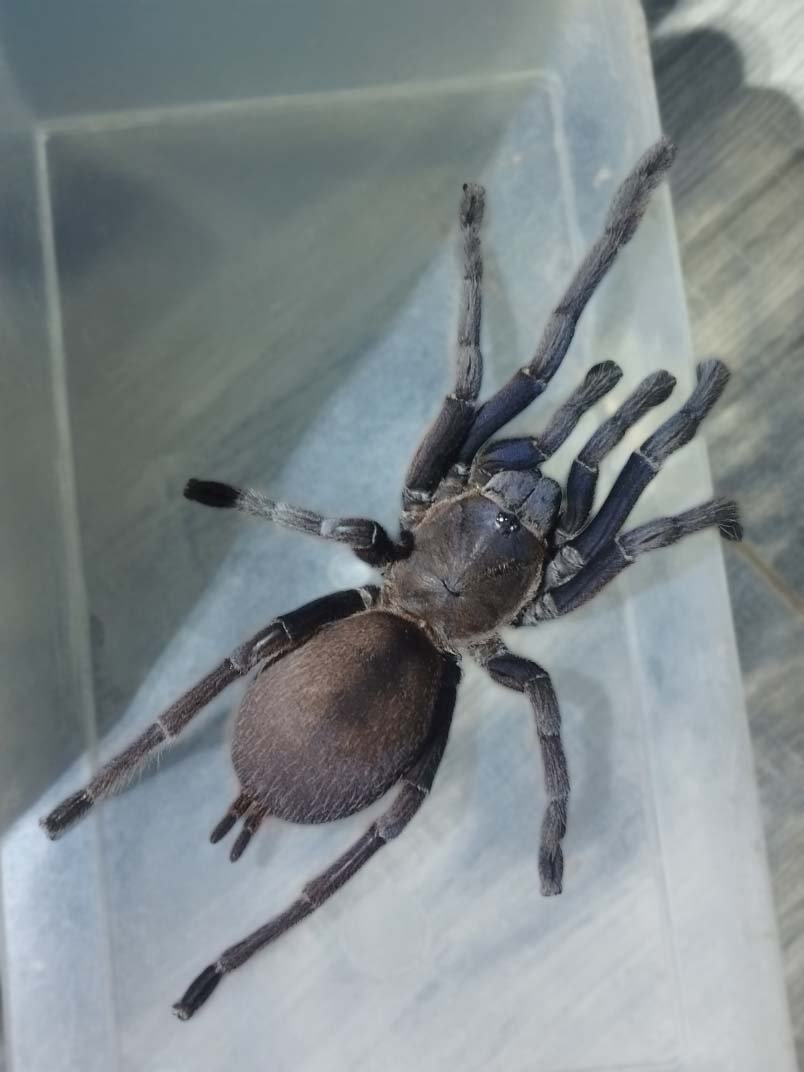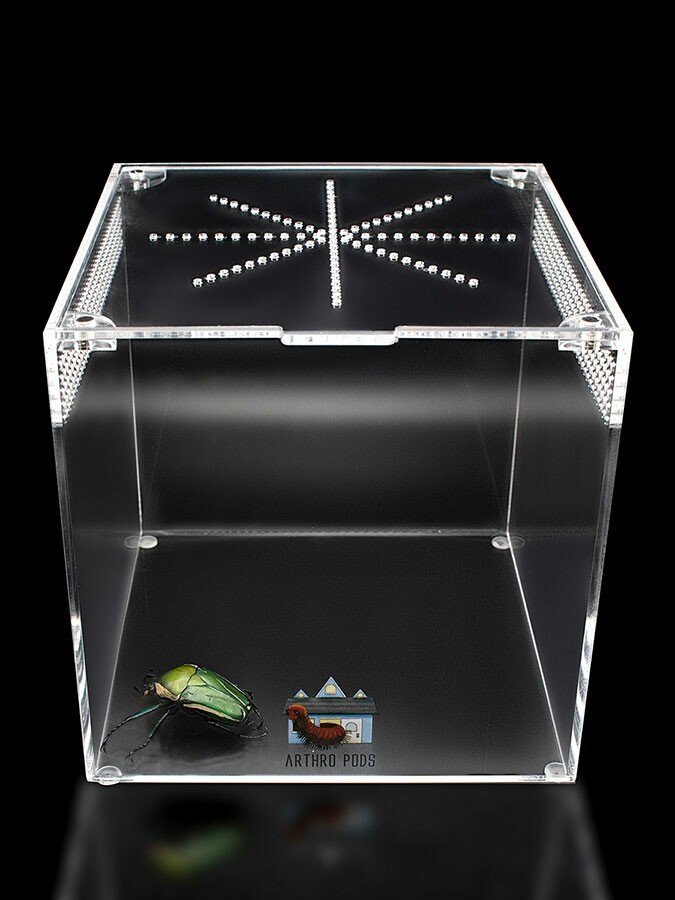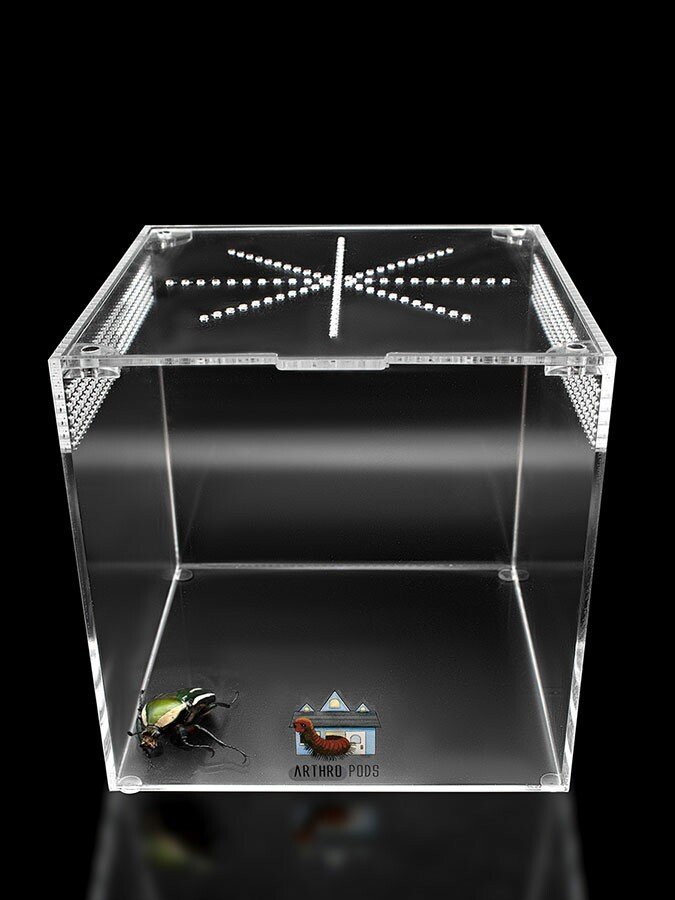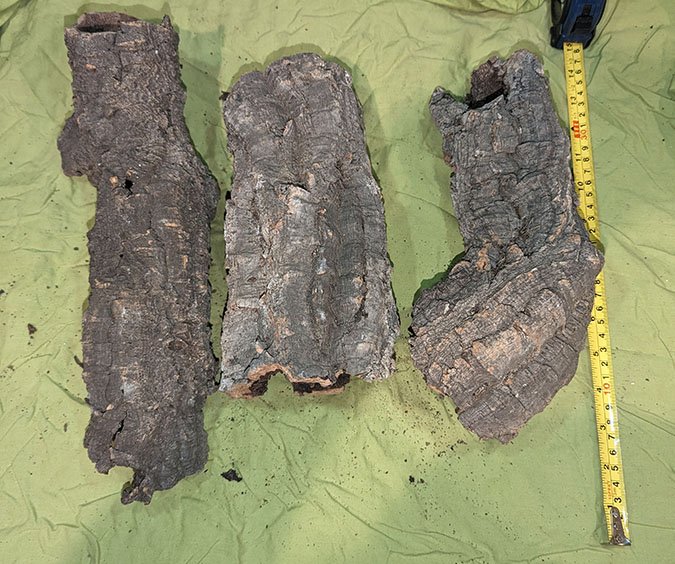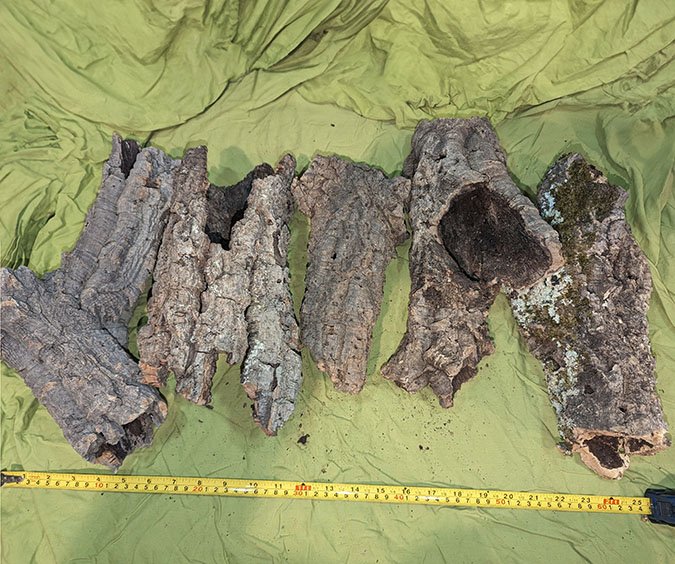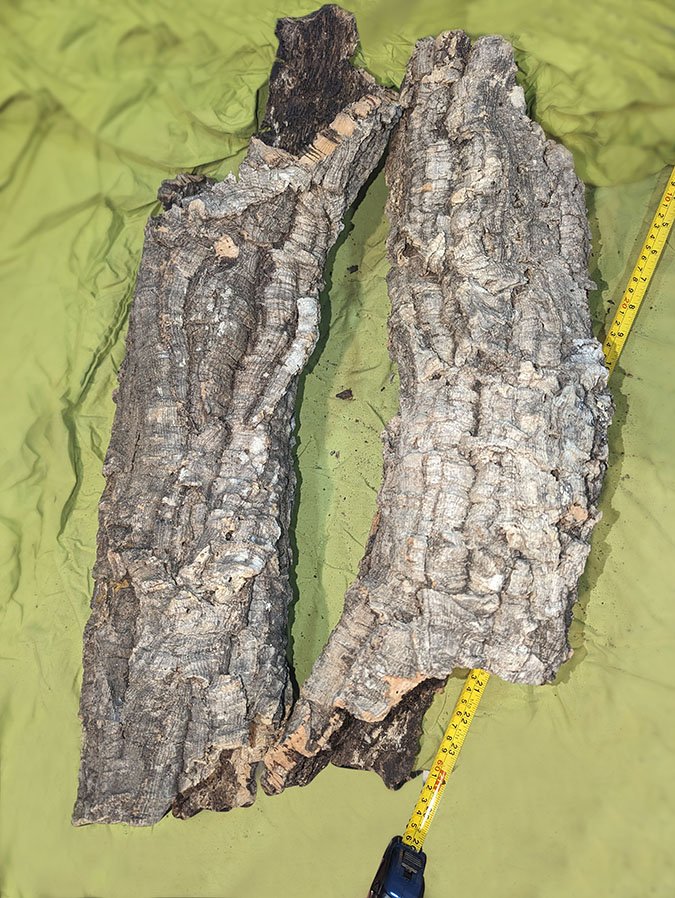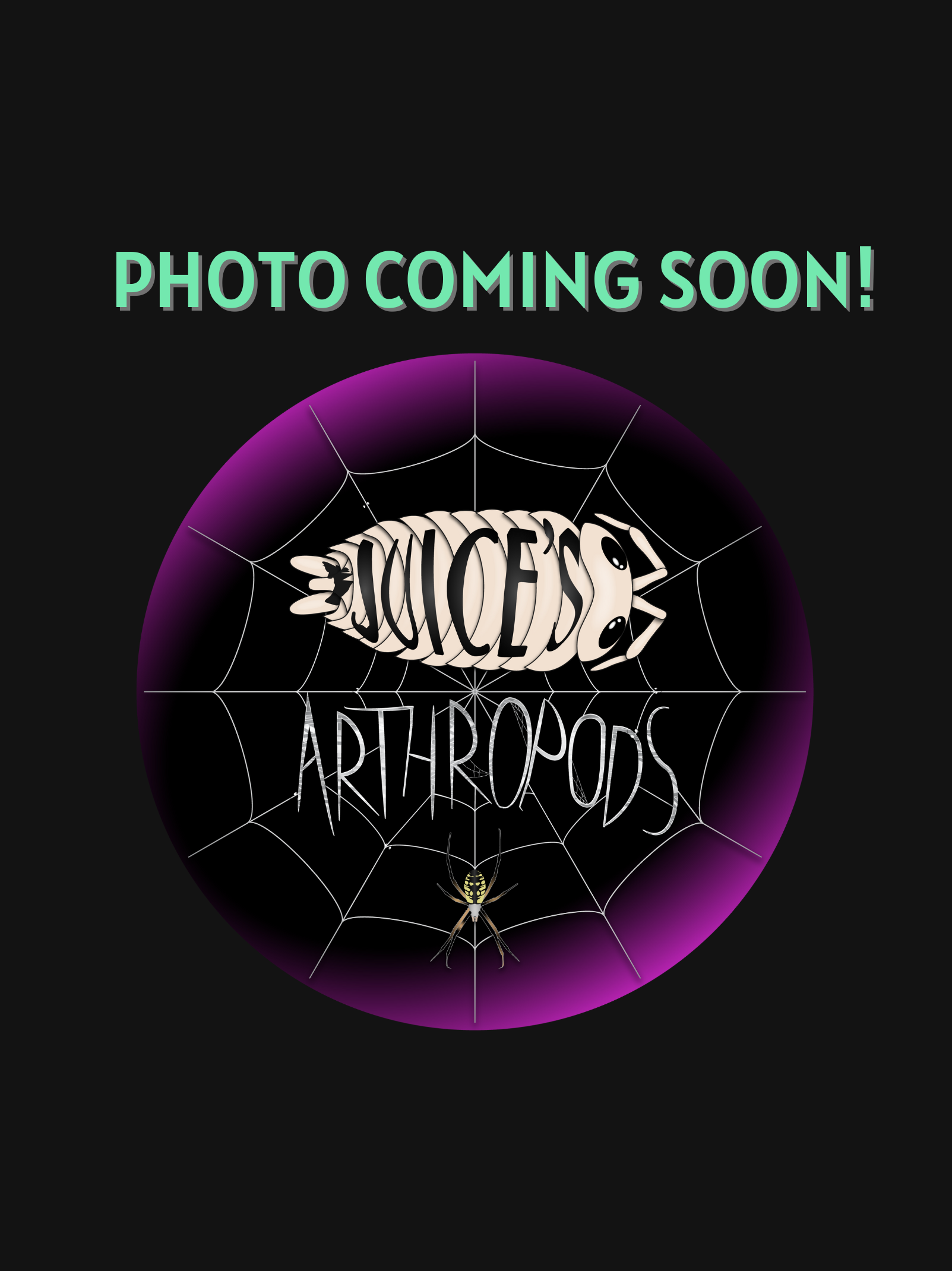Chilobrachys dyscolus
Chilobrachys dyscolus or Vietnam Blue Tarantula, is a striking Old World tarantula species native to Vietnam. It is particularly admired for its deep blue iridescent sheen, which becomes more prominent under certain lighting conditions.
As a fast-growing, burrowing species, the Vietnam Blue Tarantula is known for its defensive nature and medically significant venom, making it more suitable for experienced tarantula keepers. It thrives in humid, tropical environments and is an adept web builder, often creating elaborate silk tunnels within its enclosure.
Chilobrachys dyscolus or Vietnam Blue Tarantula, is a striking Old World tarantula species native to Vietnam. It is particularly admired for its deep blue iridescent sheen, which becomes more prominent under certain lighting conditions.
As a fast-growing, burrowing species, the Vietnam Blue Tarantula is known for its defensive nature and medically significant venom, making it more suitable for experienced tarantula keepers. It thrives in humid, tropical environments and is an adept web builder, often creating elaborate silk tunnels within its enclosure.

Chilobrachys dyscolus or Vietnam Blue Tarantula, is a striking Old World tarantula species native to Vietnam. It is particularly admired for its deep blue iridescent sheen, which becomes more prominent under certain lighting conditions.
As a fast-growing, burrowing species, the Vietnam Blue Tarantula is known for its defensive nature and medically significant venom, making it more suitable for experienced tarantula keepers. It thrives in humid, tropical environments and is an adept web builder, often creating elaborate silk tunnels within its enclosure.
What's the ideal diet for a Vietnam Blue Tarantula?
All Tarantulas can eat a variety of feeders. Stick to crickets, dubia roaches, silkworms, horned worms occasionally, and a superworm or mealworm as the occasional treat!
How should I keep a Vietnam Blue Tarantula?
You can start with the Fossorial Fissure Small enclosure for this particular creature. When they are about ⅓ the size, you will want to go to the Fossorial Fissure Medium or Fossorial Fissure Large enclosure. Feed them as slings once a week, twice if their opisthosoma (abdomen) looks small, but if the opisthosoma is wider than their prosoma (pneumothorax), then wait a couple of days to feed. For juveniles or adults, stick to feeding once a week, nothing larger than their opisthosoma. Make sure to keep a full water dish at all times; wider and deeper is preferred.
How long could a Vietnam Blue Tarantula live?
Females are believed to live upwards of 15+ years, and males do not exceed 4 years of age. All estimates are based on multiple sources.



